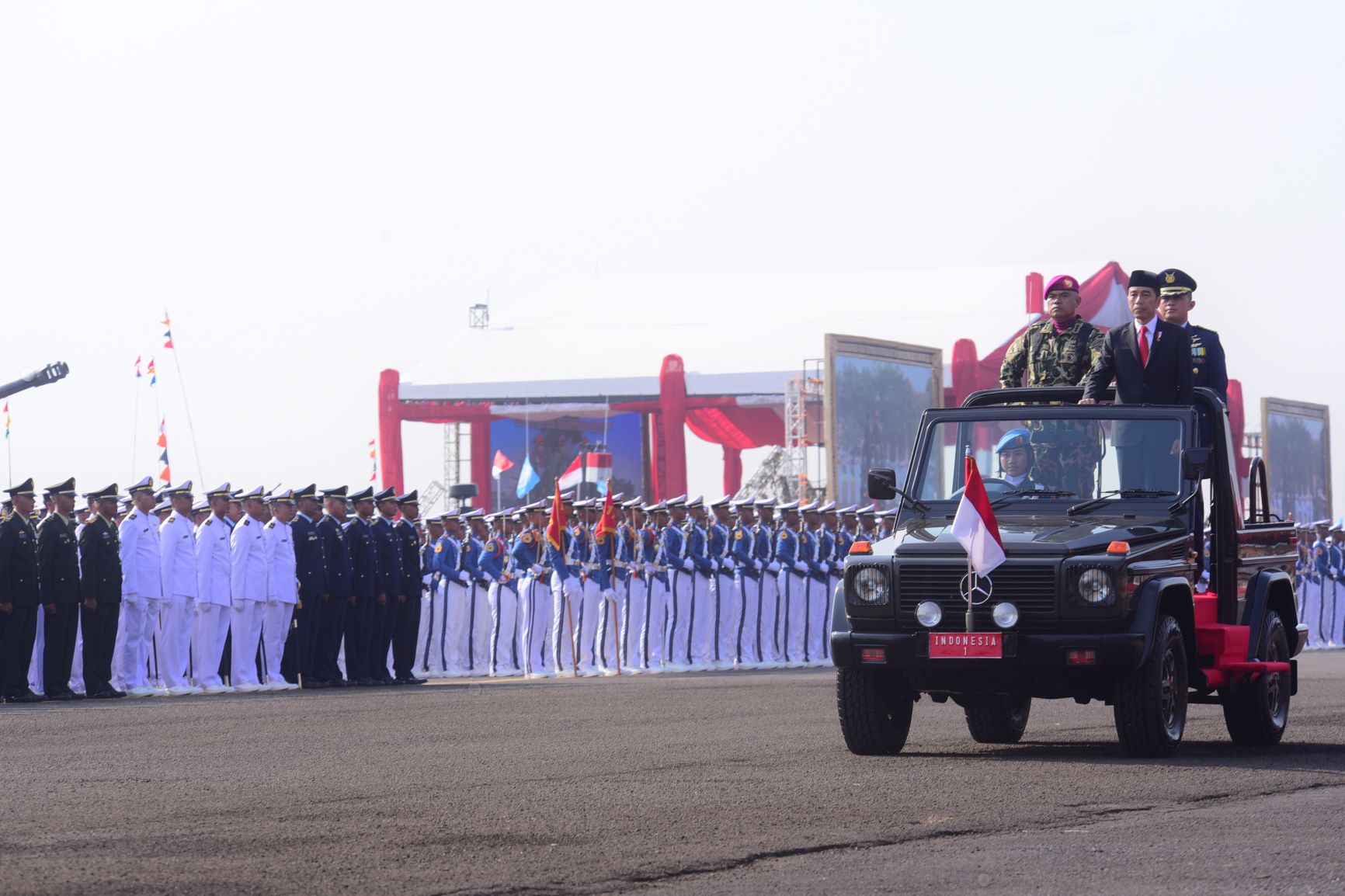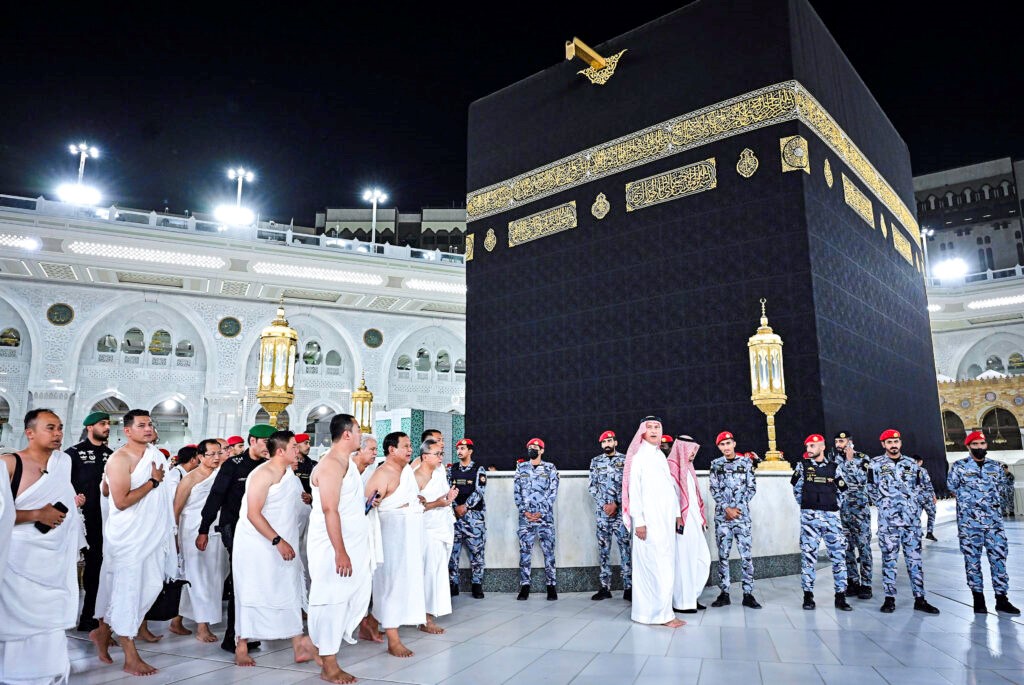Presidential Regulation 66/2019 Stipulates TNI Structural Organization
 President Joko “Jokowi” Widodo on 18 October, 2019 signed the Presidential Regulation (Perpres) Number 66 of 2019 on the Organizational Structure of the Indonesian National Defense Forces (TNI).
President Joko “Jokowi” Widodo on 18 October, 2019 signed the Presidential Regulation (Perpres) Number 66 of 2019 on the Organizational Structure of the Indonesian National Defense Forces (TNI).
The Regulation replaces Presidential Regulation Number 10 of 2010 on the Organizational Structure of the Indonesian National Defense Forces (TNI) as amended several times, the latest by Presidential Regulation Number 42 of 2019 on the Second Amendment to Presidential Regulation Number 10 of 2010 on Organizational Structure of the Indonesian National Defense Forces (TNI).
According to the new Regulation, the TNI is under the President in terms of deployment and use of military force and under coordination of Ministry of Defense in terms of defense policy and strategy as well as administrative matters.
The TNI, according to the Regulation, is an institution led by the Commander, and consists of the Army, the Navy, and the Air Force, each led by a Chief of Staff who directly reports to the Commander.
“The Indonesian Army, Navy, and Air Force as referred to have the same and equal position,” Article 3 Paragraph (3) of the Presidential Regulation reads.
According to the Regulation, the TNI has the following main responsibilities: a. defending the country’s sovereignty; b. maintaining the territorial integrity of the Unitary State of the Republic of Indonesia based on the Pancasila and the 1945 Constitution of the Republic of Indonesia; and c. protecting the entire nation and all Indonesia’s land from any threat to the integrity of the nation and state.
In terms of national defense, according to the Regulation, the TNI has the function to: a. protect the Nation from any form of military threat from outside and inside the country which threaten the sovereignty, territorial integrity and security of the Nation; b. respond to any form of the aforementioned threat; and c. restore state security after destabilization.
The Regulation also stipulates that the TNI organizations are arranged in a hierarchical and pyramidal form, and the TNI Headquarter oversees the Army Headquarter, the Navy Headquarter, and the Air Force Headquarter.
The Commander, according to the Regulation, oversees Chief of Staffs in terms of personnel development and oversees Main Operation Commanders in terms of personnel deployment.
The Army, the Navy, and the Air Force, in terms of personnel development, are each led by Chief of Staff who oversees Main Command for Personnel Development of each Force.
The Regulation stipulates that authority for the TNI personnel deployment and personnel development should be in accordance with the TNI Doctrine, while authority for each Force’s personnel deployment and personnel development should be in accordance with the doctrine of the Force.
“Further provisions regarding the aforementioned authority are regulated by the Commander’s Regulation,” Article 11 Paragraph (3) of the regulation states.
TNI organizations, according to the Regulation, consist of: a. TNI Headquarter; b. the Army Headquarter; c. the Navy Headquarter; and D. the Air Force Headquarter.
TNI Headquarter includes:
- Leadership: 1. the Commander; and 2. the Deputy Commander.
- Leader supporting units: 1. General Staff of the TNI; 2. Inspectorate General of the TNI; 3. Expert Staff of the Commander; 4. the TNI Strategic Policy and General Planning Staff; 5. the TNI Intelligence Staff; 6. the TNI Operations Staff; 7. the TNI Personnel Staff; 8. the TNI Logistics Staff; 9. the TNI Territorial Staff; and 10.the TNI Communications and Electronics Staff.
- Service units: 1. the TNI Psychology Center; 2. the TNI Communication and Electronics Unit; 3.the TNI Operations Control Center; 4. the TNI Bureaucracy Reforms Center; 5. the TNI General Secretariat; and 6. Detachment of the TNI Headquarters;
- Central Agencies: 1. the TNI Command and General Staff College; 2. the TNI Academy; 3. the TNI Strategic Intelligence Agency; 4. the TNI Doctrine, Education and Training Development Command; 5. the TNI Special Operations Command; 6. the Presidential Security Detail; 7. the TNI Law Agency; 8.the TNI Information Center; 9. the TNI Health Center; 10. the TNI Military Police Center; 11. the TNI Finance Center; 12. the TNI Peacekeeping Mission Center; 13. the TNI Strategic Assessment, Research and Development Center; 14. the TNI Logistics Agency; 15. the TNI Mental Development Center; 16. the TNI History Center; 17. the TNI Information and Data Processing Center; 18. the TNI International Cooperation Center; 19. the TNI Physical Development and Military Basic Regulations Center; 20. the TNI Procurement Center; 2I. the TNI Maritime Information Center; 22. the TNI Permanent Garrison Command; and 23. the TNI Cyber Unit.
- Main Operation Commands: 1. Joint Regional Defense Command; 2. Army Strategic Reserves Command; 3. Fleet Forces Command of the Republic of Indonesia; 4. National Air Operations Command; 5. the Navy Hydro-Oceanography Center of the Navy; 6. Military Regional Command; 7. Special Forces Command; 8. Military Naval Command; and 9. Marine Corps.
The Regulation also stipulates that the Commander is a TNI leader who is held by high-ranking officer who reports to the President in accordance with Law and Regulations.
Commander has responsibility to: a. lead the TNI; b. implement national defense policies; c. carry out military strategies and carry out military operations; d. develop the TNI doctrine; e. carry out the deployment of military force for military operations; f. maintain readiness of the TNI and maintain operational readiness; g. give advice to Minister of Defense in drafting national defense policies; h. give advice to Minister of Defense in terms of providing the TNI logistics and other defense components; i. give advice to Minister of Defense in preparing and implementing strategic planning for national resources management of national defense; j. deploy reserve Forces after being mobilized for military operation; k. use supporting components that have been prepared for military operations; and l. carry out other duties and obligations in accordance with law and regulations.
“The Commander is assisted by the Deputy Commander,” Article 14 Paragraph (3) of the regulation reads.
The Deputy Commander, according to the Regulation, is the coordinator of the Development of the TNI in order to maintain integration of the defense forces. The Deputy Commander is responsible to the Commander.
The Deputy Commander is responsible to: a. assist the Commander in carrying out the daily task; b. provide advice to the Commander regarding the implementation of national defense policies, the development of the TNI organization, the development of doctrines and military strategy of the TNI as well as development and deployment of the TNI personnel; c. carry out the tasks of the Commander in case the Commander is temporarily and/or permanently unable; and d. carry out other tasks ordered by the Commander.
The Regulation also states that implementation of the new TNI structural organization is carried out in several stages, in accordance with the ability of the State Budget.
“The Presidential Regulation shall apply as of the date of its promulgation,” Article 203 of the Presidential Regulation reads. The Regulation was promulgated by Minister of Law and Human Rights Yasonna H. Laoly on 18 October, 2019. (Pusdatin / ES)
Translated by: Ridwan Ibadurrohman
Edited by: Yuyu Mulyani








